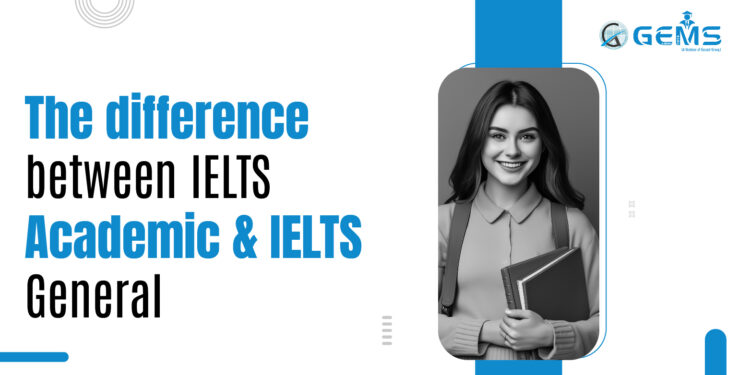Introduction
The International English Language Testing System (IELTS) offers two versions of the test: IELTS Academic and IELTS General Training. While both versions assess a candidate’s English language proficiency, they serve different purposes and are designed for distinct audiences. Below, In this blog Gocool Group explore the key differences between IELTS Academic and IELTS General Training.
IELTS Academic
Purpose:
IELTS Academic is primarily intended for individuals who plan to pursue higher education at universities or other educational institutions where English is the medium of instruction. It is also essential for professionals seeking registration in certain fields, such as medicine or engineering, in English-speaking countries.
Test Takers:
Students applying to study at undergraduate or postgraduate levels, as well as professionals aiming for academic qualifications abroad, usually take the IELTS Academic test.
Reading and Writing:
The Reading and Writing sections in IELTS Academic are more challenging and academically oriented. Candidates encounter texts typically found in academic settings, such as academic journals, research papers, and scholarly articles. Writing Task 1 requires summarizing information from graphs, charts, or diagrams, while Writing Task 2 involves writing an academic essay.
Listening and Speaking:
The Listening and Speaking modules are similar in both versions of the IELTS test.
Scoring:
The scoring criteria for IELTS Academic and IELTS General Training are the same. Candidates receive scores on a nine-band scale, with 9 being the highest and 1 the lowest.
IELTS General Training
Purpose:
IELTS General Training is primarily designed for individuals who plan to migrate to English-speaking countries, seek work experience, undergo training programs, or apply for secondary education in those countries.
Test Takers:
Individuals seeking immigration visas or work visas in English-speaking countries often take the IELTS General Training test. It is also common for those applying for non-academic training programs or secondary education to choose this version.
Reading and Writing:
The Reading and Writing sections in IELTS General Training are based on everyday situations and workplace scenarios. The texts are more accessible and relevant to daily life, such as advertisements, notices, or work-related documents. Writing Task 1 requires writing a letter, and Writing Task 2 involves writing a general essay.
Listening and Speaking:
The Listening and Speaking modules in IELTS General Training are the same as those in IELTS Academic.
Scoring:
The scoring criteria for IELTS General Training are the same as IELTS Academic. Candidates receive scores on a nine-band scale.
Conclusion
In summary, the key difference between IELTS Academic and IELTS General Training lies in their purpose and the types of tasks in the Reading and Writing sections. IELTS Academic is geared towards higher education and academic qualifications, while IELTS General Training is more focused on immigration, work, and daily life situations. Test takers should choose the version that aligns with their specific goals and objectives for studying or living in an English-speaking country.



